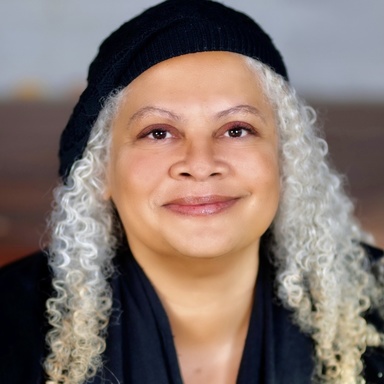 “…I feel privileged that I’ve gotten to this point in the United States of America where somebody like me can be where I am and I intend to always use my voice to speak out...”
“…I feel privileged that I’ve gotten to this point in the United States of America where somebody like me can be where I am and I intend to always use my voice to speak out...”
Feminism and Leadership
|
Liberal |
is often focused on individual women’s choices and on the notion of empowerment. |
|
Radical |
sees gender oppression as something more complex, deeply engrained, and systematic. |
|
Difference |
feminists believe that there are inherent differences between men and women. |
|
Equality |
feminists believe that people are inherently equal regardless of gender. |
|
Religious |
is any kind of feminism that explicitly ties itself to a religion, such as Muslim feminism. |
|
Lesbian |
encourages women to direct their energy towards other women and sometimes posits lesbianism as a logical consequence of feminism. |
|
White |
is a term for feminism that fails to be intersectional. |
|
Womanism |
is a movement that is a response specifically to the racial/gender oppression of Black women. |
|
Black |
holds that sexism, racism and class oppression are all linked together. |
Types of feminism. Which type of feminism resonates with you the most? Dr. Wing discusses how we may have all of these types of feminism within us at different parts of our lives. Reflect upon your experiences, and think of times where you might have adopted the different types of feminism. Dr. Wing highlights the importance that both men and women need to be able to nurture individuals in all aspects (big brother, big sister, mentors, etc.) Do you agree with her statement? Why or why not?
Feminism and Leadership. How has the word “feminism” been used in relation to your leadership? How has the meaning of the word “feminism” changed over time? What other types of feminism have you heard of? How do female stereotypes effect women in politics or positions of power?
Intersectionality and Theory
Intersectionality is the study of intersections between forms or systems of oppression, domination or discrimination. Dr. Wing points out that intersectionality applies to all of us. Intersectionality allows us to recognize which of our identities have privileges and which do not. Think about the different identities you hold and analyze which ones are privileged identities and which ones are not.
Critical Race Theory (CRT) began as an examination of race/ ethnicity and the law. Considering your life experiences, how has your race/ethnicity influenced your relationships in personal and professional spheres? Thinking about the CRT tenets, how can you apply them to your understanding of race relations? How can you practice them in your leadership?
Critical Race Feminism (CRF) considers the subjugated situation of masses of women who occupy social positions deemed to be on the “bottom.” CRF focuses on the intersection of identities such as race, color, language, gender, stature, etc. Dr. Wing emphasizes the need to look at more identities simultaneously. Think of a time when you were helping someone or receiving assistance and the intersection of all of your identities was not taken into consideration. What were the outcomes of the situation?
Case Studies
|
DeGraffenreid v. General Motors (1977) |
Five Black women sued General Motors, alleging that the employer's seniority system perpetuated the effects of past discrimination against Black women. |
|
Jew v. University of Iowa (1990) |
The University of Iowa and the Iowa Board of Regents were found liable for harassment of a member of the university's faculty. |
|
EEOC v. Abercrombie & Fitch (2015) |
The Supreme Court ruled against the retailer, 8-1, deciding that the company’s failure to accommodate a job applicant who wore a hijab violated civil rights law. |
Have you witnessed these types of discrimination in the workplace? If so, how was the situation handled? What other issues can you think of that currently may exist as problems for women in the workforce? What other legal battles are women fighting for today?
Despite federal anti-discrimination laws stating that grooming policies are outside the scope of employment discrimination statutes, the Army has now gone to a greater degree by approving dreadlocks for all female soldiers. How can employers accommodate their grooming policies to be more inclusive?
Other Resources
MacKinnon, C. A. (1987). Feminism unmodified: Discourses on life and law. Cambridge, Mass: Harvard University Press.
MacKinnon, C. A. (1989). Toward a feminist theory of the state. Cambridge, Mass: Harvard University Press.
Gilligan, C. (1993). In a different voice: Psychological theory and women's development. Cambridge, Mass: Harvard University Press.
McKissack, P., & McKissack, F. (1992). Sojourner truth: Ain't I a woman?. New York: Scholastic.
Walker, A. (1984). In search of our mothers' gardens: Womanist prose. San Diego: Harcourt Brace Jovanovich.
Davis, A. Y. (1981). Women, race, & class. New York: Random House.
Davis, A. Y. (1999). Blues legacies and Black feminism: Gertrude "Ma" Rainey, Bessie Smith and Billie Holiday. New York: Vintage.
Wing, A. K. (2003). Critical race feminism: A reader. New York: New York University Press.
Delgado, R., & Stefancic, J. (2001). Critical race theory: An introduction. New York: New York University Press.
Mandela, N. (1995). Long walk to freedom: The autobiography of Nelson Mandela. Boston: Back Bay Books.
